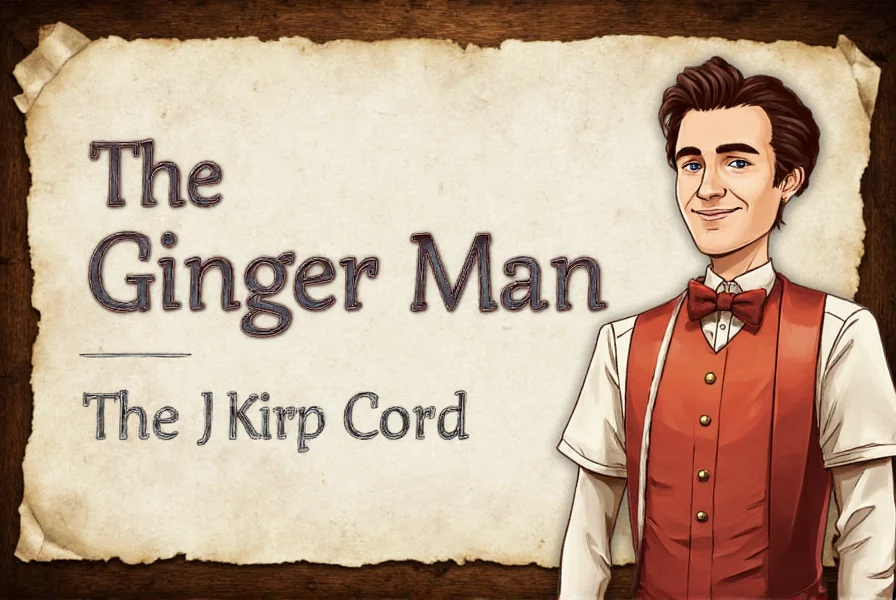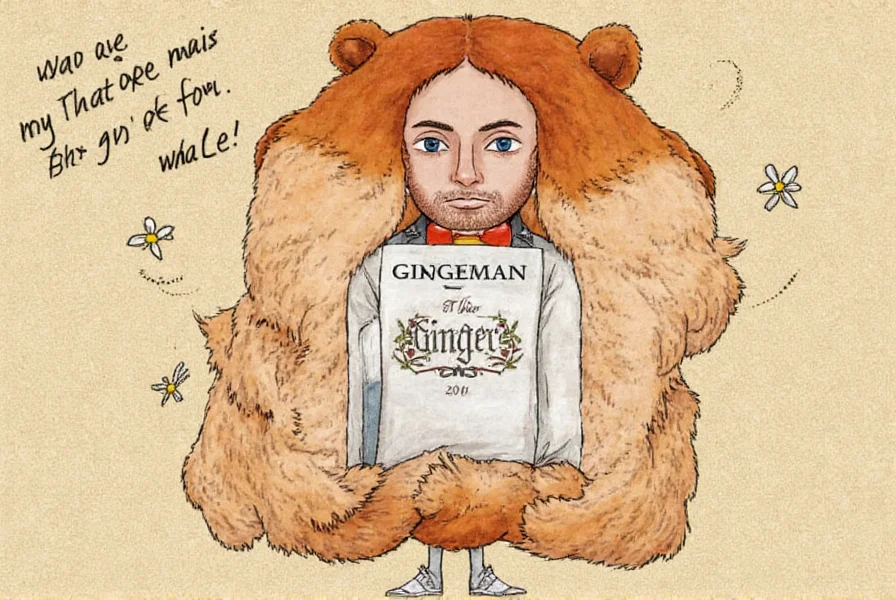When readers search for the ginger man, they're most often seeking information about J.P. Donleavy's seminal literary work that shook the publishing world in the mid-20th century. This novel, initially rejected by 41 publishers before finding a home with Paris-based Olympia Press, established Donleavy's distinctive voice characterized by rhythmic prose, dark humor, and unflinching portrayals of human nature.
Historical Context and Publication Journey
Written between 1951-1952 while Donleavy studied at Trinity College Dublin, The Ginger Man faced extraordinary resistance from mainstream publishers who deemed its content too risqué. The novel's journey to publication reads like a story itself—rejected repeatedly for its frank depictions of sexuality, alcoholism, and the chaotic life of its protagonist Sebastian Dangerfield. Olympia Press, known for publishing controversial works that couldn't find homes elsewhere, finally released it in 1955 as part of their "Traveller's Companion" series.
Understanding the ginger man book requires recognizing the conservative literary landscape of the 1950s. Donleavy's stream-of-consciousness style, blending vulgarity with poetic language, challenged conventional narrative structures. The author developed a unique rhythmic prose pattern that critics initially dismissed but later recognized as innovative.

Literary Significance and Style
Donleavy's the ginger man novel pioneered techniques that would influence generations of writers. Its significance lies not just in content but in form—the author created what he called "word sculptures" through repetitive phrasing, alliteration, and carefully crafted sentence rhythms. This stylistic approach transformed potentially sordid material into something artistically compelling.
The novel's structure follows Dangerfield's chaotic existence in Dublin's bohemian circles, capturing the tension between his American background and Irish surroundings. Donleavy masterfully portrays the protagonist's simultaneous charm and repulsiveness, making the ginger man a complex character study rather than simple moral allegory.
Censorship Battles and Cultural Impact
Perhaps no aspect defines the ginger man book more than its censorship history. Banned in Ireland, the United States, and other countries for decades, the novel became a cause célèbre in free speech debates. US Customs seized copies entering the country until 1955, and it wasn't legally available in America until 1958 when Grove Press successfully defended it in court.
These ginger man novel controversy episodes ironically boosted the book's reputation. As literary scholar John Ryan noted, "The censorship battles transformed Donleavy's work from a promising debut into a symbol of artistic freedom." The novel's eventual acceptance marked a turning point in publishing standards, paving the way for more explicit content in mainstream literature.
| Country | Ban Duration | Reason Cited | When Legalized |
|---|---|---|---|
| United States | 1955-1958 | "Obscene and immoral" | 1958 (Grove Press v. US) |
| Ireland | 1955-1960s | "Undermining public morality" | Gradually lifted in 1960s |
| Canada | 1955-1960 | "Harmful to young readers" | 1960 (court challenge) |
Enduring Legacy in Modern Literature
Today, scholars recognize jp donleavy the ginger man as a crucial bridge between modernist experimentation and contemporary fiction. Its influence appears in works by authors ranging from Hunter S. Thompson to Irvine Welsh. The novel's exploration of identity, displacement, and the search for meaning in post-war Europe remains relevant to modern readers.
Academic interest in the ginger man literary significance continues to grow, with recent scholarship examining its treatment of gender dynamics, class tensions, and the immigrant experience. Donleavy's work has been adapted for stage multiple times, though film adaptations have proven challenging due to the novel's internal monologue style.
Why The Ginger Man Still Matters
Reading the ginger man book summary today reveals why this novel transcends its controversial origins. Beyond the shock value that initially defined its reception, the work offers profound insights into human nature, the creative process, and the tension between societal expectations and individual freedom.
Modern readers discover that the ginger man novel isn't merely about rebellion for rebellion's sake, but about the complex journey toward self-understanding. Dangerfield's chaotic existence serves as a mirror reflecting universal struggles with responsibility, ambition, and the search for authenticity.
Frequently Asked Questions
Why was The Ginger Man banned in multiple countries?
The Ginger Man faced bans primarily for its frank depictions of sexuality, alcoholism, and what censors deemed "immoral" behavior. US Customs seized copies until 1958, Ireland banned it for over a decade, and Canada restricted it until the 1960s. The novel's raw portrayal of bohemian life challenged 1950s social norms, leading authorities to classify it as obscene despite its literary merit.
Is The Ginger Man based on J.P. Donleavy's real life?
While Donleavy drew from his experiences as an American student at Trinity College Dublin after WWII, The Ginger Man isn't strictly autobiographical. The protagonist Sebastian Dangerfield shares some biographical elements with Donleavy, but the novel transforms these into a heightened fictional reality. Donleavy himself stated he used "the truth as a springboard for imagination" rather than writing memoir.
What makes The Ginger Man's writing style unique?
Donleavy developed a distinctive rhythmic prose style featuring repetitive phrasing, alliteration, and carefully constructed sentence patterns he called "word sculptures." This technique transforms potentially crude subject matter into something artistically compelling. The novel's stream-of-consciousness approach blends vulgarity with poetic language in a way that was revolutionary for its time and influenced subsequent generations of writers.
How did The Ginger Man influence later literature?
The Ginger Man paved the way for more explicit content in mainstream literature and influenced writers including Hunter S. Thompson, Charles Bukowski, and Irvine Welsh. Its successful legal defense against obscenity charges established important precedents for literary freedom. The novel demonstrated that works with controversial subject matter could possess significant artistic merit, helping to expand what publishers would consider acceptable in the post-war era.











 浙公网安备
33010002000092号
浙公网安备
33010002000092号 浙B2-20120091-4
浙B2-20120091-4